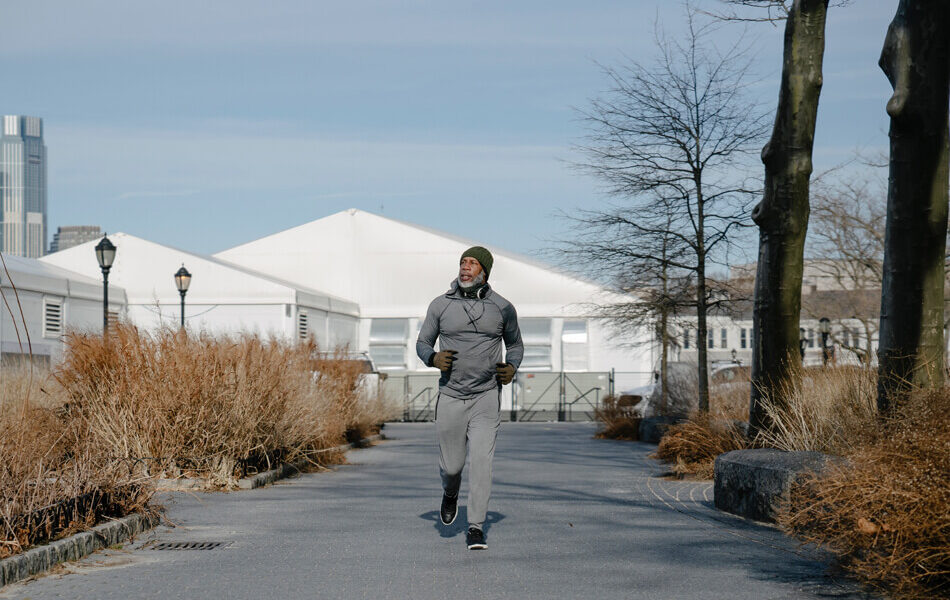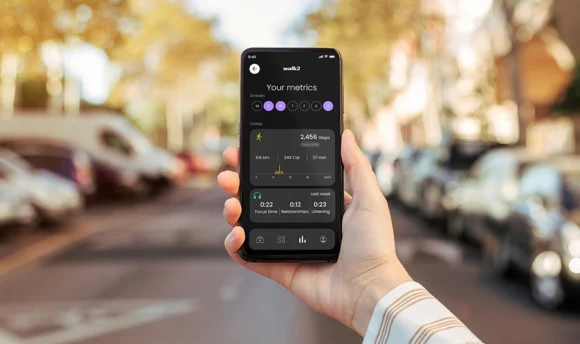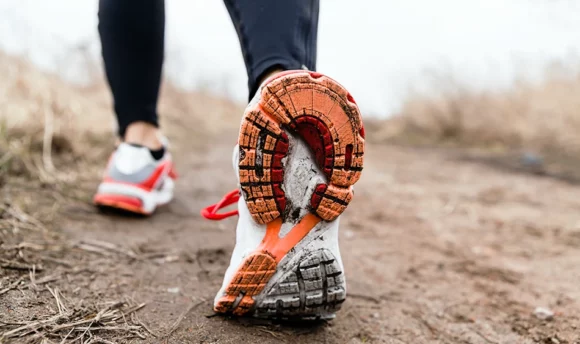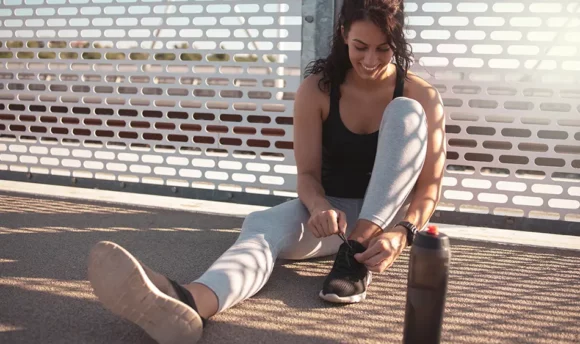Slow Jogging: Benefits, Technique and Pace
Jogging is a very popular exercise enjoyed by many people, but have you heard about slow jogging? Read on to find out more about slow jogging.

Although running is the most popular recreational activity, more than half of runners report having an injury each year. Many runners eventually give up running for a less demanding activity due to injuries brought on by overtraining, bad form, poor nutrition, and incorrect footwear.
However, Hiroaki Tanaka’s method of easy running, or “slow jogging,” shows that there is a pain-free, effective method of running for people of different ages and lifestyles for the first time.
Slow jogging is an injury-free running technique that aids participants in calorie burning, weight loss, and even type 2 diabetes reversal. By keeping a smile and a relaxed pace, slow jogging enables runners to take pleasure in the injury-free activity.
What Is Considered Slow Jogging?
Unlike traditional training, which involves concentration and effort, you can think of your definition of “slow” as conversation-pace running.
Your slow walking speed is evident if you can communicate with a friend rather effortlessly. It typically involves running at a walking pace for beginners.
Here is an example of the type of information found in the pace charts used mostly by Road Runners Club of America (RRCA) coaches to give you an understanding of the distinction between fast and slow for 2 different runners:
- If you can do a 5K in 30 minutes, with a pace of 9:40 per mile, then your easy long run should be 12 minutes per mile (slow).
- While running slowly, you can complete a 5K in 25 minutes, with a pace of 8:13.
If you choose to monitor your heart rate while running, a leisurely pace would probably result in your heart rate being between 110 and 140 beats per minute.
Why Is Slow Jogging Known as Japanese Jogging?
Slow jogging is a form of exercise developed by Professor Hiroaki Tanaka (Fukuoka University, Japan) that was previously unknown outside of Japan but is now becoming more and more well-known throughout the world.
He spent many years researching the effects of various types of physical activity on health and well-being as well as the optimal type for the typical person. His search was prioritized by its simplicity of cultivation, wide availability, and healthful properties.
He provided the key Niko Niko pace. Niko means “smile” in Japanese. This means you can jog at a slow pace with a smile on your face.
Although we are discussing a sport that is generally associated with moving quickly, the name “slow jogging” was chosen to emphasize that moving slowly can still be an acceptable method to accomplish it.
What Are the Differences Between Slow and Fast Jog?
For many runners, bones, muscles, tendons, and ligaments are put under a great deal of strain when they jog quickly. Your body experiences microtears in the muscle fiber, dehydration, glycogen depletion, and other effects after a challenging run.
The act of running quickly is related to severe trauma. Running fast all the time will not be effective in the long run, as persistent trauma will inevitably result in burnout and breakdown.
The majority of athletes who have attempted to run the day after a difficult run are aware that trying to run quickly or vigorously is not a good idea. Their bodies likely have minor muscle fiber tears, noticeable leg pain and weariness, and overall flatness.
However, alternating simple runs with strenuous ones is an excellent method to maintain your running fitness between difficult sessions and speed up the healing and recovery process.
If you are new to jogging, we recommend the Joggo app. It is a running-specific training application. Joggo targets all fitness aspirants, from newbies to expert runners. The program guarantees a gradual progression toward becoming a self-assured jogger without running the danger of injury or overtraining.
This app offers a large number of educational materials to assist beginner runners in avoiding frequent mistakes and advancing more quickly.

- Personalized running plans created by professional coaches
- Meal plans perfectly tailored to your current diet, allergies, and health needs
- Treadmill mode for people preferring indoor running
- Educational articles on easier running, injury prevention, nutrition, and more
- Behavior science-based reward system for lasting motivation
How to Run Slower?
It’s best to start slowly whenever you run. To give your body a chance to warm up, run for around 10–15 minutes at a conversational pace. On the other hand, it’s ideal to finish your workout with at least 5 minutes of gentle cooling down, keeping it there until your heart rate drops to under 100 beats per minute.
The blood that has flowed to your extremities during exercise might return to the heart and brain during this cool-down period.
The RRCA coaches’ standard recommendation is to plan no more than 2 to 4 “efforts” per week. A speed session, a lengthy run, and strenuous cross-training exercises are all considered efforts.
The other days should be slower, conversation-paced runs, depending on how many days you run each week. This means that between 75–80% of your weekly distance should be done at a slower, talkable pace.
Here are some of the tips that will help you run slower.
Choose a companion
The age-old test to determine whether you’re in the best “easy run” zone is whether you can maintain a conversation without gasping for air. Just make sure everyone understands the importance of going slowly.
Reduce your arm swing
Although frequently overlooked, your arm swing can certainly have a significant impact on how you run. Your hips and lower body won’t move side to side if your arms do.
A propulsive force can be created by arm swing, so the more you drive your arms forward and backward, the more your legs will want to do the same.
As you run slower, your arm swing should consequently change automatically.
Wear the right shoes
Barefoot jogging is probably the most natural kind of running for humans because we evolved to run without the support of shoes.
Unfortunately, a thick sole was produced for the majority of modern running shoes, especially those made for novices, to lessen shocks from landing on the heels. Because of this, our feet move extremely differently from how we developed to run. Such a design instructs us to land on our heels and prevents natural movement.
Slow jogging, in many respects, entails returning to the fundamentals of running, including footwear. Simple footwear with broad toe boxes and thin, elastic soles that sit comfortably on the heel is highly advised.
The proper footwear, often known as minimalist or barefoot footwear, is essential to mastering the natural approach.
6 Benefits of Slow Jogging
Slow jogging has many advantages. Runners can recover more quickly when slow jogging days are added to their training regimen, but it also breaks up the hard work, making more effective and high-quality workout sessions.
Your energy expenditure increases 3 times when you walk slowly compared to when you are sitting still, 5 times when you are brisk walking, and 6 times when you are climbing stairs.
Here are a few explanations for why you should enjoy running slowly!
#1 Pain-free approach to staying healthy
You’re less likely to hurt yourself when you run at your own pace. There is less chance of overstretching your muscles, and there is less effect on your joints.
Beginner runners, people who are recuperating from an injury, or anybody else trying to boost their weekly kilometers log would love this.
Additionally, you are more aware of your surroundings and can anticipate trip hazards when your attention is not solely on speed. Run slowly and enjoy yourself!
#2 You’ll eventually lose weight
When you are slow jogging, your maximum heart rate (MHR) will be in the 60–80% range. You can still talk but won’t be able to sing properly, which is a symptom of this.
When you exercise aerobically below this rate, calories are burned slowly, and when you exercise aerobically beyond this rate, carbohydrates are burned instead of your body’s fat reserves. As a result, leisurely jogging is recommended as the greatest aerobic activity for weight loss and helps to stay healthy.
#3 It will improve your efficiency
Running slowly increases endurance without overtaxing your muscles. The day following a difficult workout, a leisurely run might also aid in your recovery.
A long-distance runner also needs to be adept at pacing, and what better way to practice than by running slowly and steadily?
#4 Your metabolism will function more effectively
Slow runs are useful when all you can feel is a pain in your legs because it’s difficult to continue moving for more than a few minutes. You can train your body to stay in “default mode” throughout a modest effort by maintaining a slow pace.
The aerobic energy system in the body can be strengthened by running slowly. The body quickly hits the aerobic threshold when sprinting or running at full speed since the available oxygen supply has been used up.
The body must now switch to using its anaerobic system to produce energy. The working muscles must convert glycogen into energy when there is little oxygen, which makes the runner tire more quickly, slow down, or stop running altogether.
The body can optimize/improve the aerobic energy system with a training program that alternates rapid runs and leisurely jogs.
#5 You’ll enjoy yourself more
Slow jogging allows you to release endorphins without getting too tired. You’ll be more inclined to desire to repeat an experience if you enjoy your runs and have little stiffness the following day.
Additionally, going slowly will allow you to enjoy your surroundings or converse with a friend as you run.
#6 You’ll support your body’s running adaptability
Slow jogging is a terrific technique to get your body back into this kind of action if you haven’t run in a while. It will aid in the strength-building and acclimatization of your tendons, ligaments, joints, bones, and muscles to the strain of running.
FAQs
A run at a light speed typically takes place at a speed of 2.6mph. They advise beginning very slowly, at a speed of no more than 2 or 3mph.
If you are a beginner, running slow can be quite difficult. But, if you follow the right techniques and improve yourself gradually, you will find it very easy.
Slow jogging is also known as the Niko Niko pace. Niko Niko means “smile” in Japanese. It means leisurely jogging at a walking pace, with a light enough intensity to enjoy conversation or, if you’re alone, to simply smile.
A Word From Our Coach
Both beginner and experienced runners can benefit from slow jogging. The relaxed running style might especially benefit those who dislike athletics.
Using the slow jogging method, begin by taking a minute to walk gently. Then, walk for 30 seconds at a leisurely pace. Continue doing this until you find your slow jogging rhythm. Use the slow-jogging method as frequently as you can in your daily activities. Starting with 10 minutes, you can progressively lengthen the units.
The ideal speed is when you can converse while running without feeling out of breath. Your metatarsus, not your heels or toes, should make contact with the ground. Make sure to deliberately relax your body when running, and even while jogging slowly, keep your shoulders loose and breathe.
Slow down if you’re having trouble breathing or feel weary. Shuffle your feet quickly and take short strides as one strategy for maintaining strong momentum during slow runs.
Conclusion
Slow jogging might be the best kind of exercise method for people who cannot run quickly. It promises better sleep, happier moods, and longer life. There are many different health advantages, even at a modest intensity.
It is a simple approach to increase your fitness and feel better all around as long as you pay attention to your technique, take breaks when required, and try to establish a routine.

















































 Select your language:
Select your language: 








